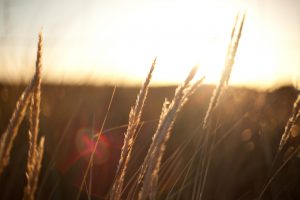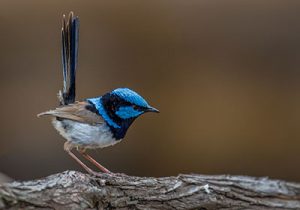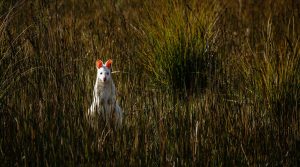You’re in for a treat. The flora and fauna on Bruny, in some cases, is like no other on the planet. And some birds choose to fly across oceans to land on Bruny to breed.
You’ve only got to look at Bruny to know the flora is special.
From rainforests in the depths of South Bruny National Park to heathlands by the coast and towering Eucalypts, the landscape is rich with diversity. There are dry, wet and grassy Eucalypt forests to explore.
Bruny’s vegetation has significant conservation values. In fact, it’s home to the only secure location of the endemic eyebright (Euphrasia fragosa), that is found in only two other places and is endangered nationally. What’s more Bruny has areas of National Estate value across old growth forests and our range of varied flora.
Step out and see what you can discover!

Let’s start with the birds. Firstly, all 12 Tasmanian endemic bird species can be found on the island. It’s why visitors from as near as Hobart to as far as the UK come to Bruny and quietly sit in a variety of habitats that favour our rare species.
Beach breeders love Bruny’s sandy beaches and dunes, including the Hooded plover which is nationally vulnerable and requires our monitoring. There are also plenty of mutton bird colonies of the Short-tailed shearwater on Bruny, who breed here after migrating across oceans from the Antarctic to the Arctic. Little penguin colonies are scattered along the coastline of Bruny and you can hop on a tour to learn more about these mighty little locals. Do note, that the burrows of all shorebirds can easily be trampled so do tread lightly.
The Swift parrot loves Bruny’s Fluted Cape area as well as Partridge Island. This island also protects the largest surviving colonies of the Forty-spotted pardalote, however, other colonies can be found on Bruny itself so keep a look out.

You’ll see Bennetts wallabies, Tasmanian pademelons and Brushtail possums all over the island. While you won’t find any Tasmanian devils or wombats on Bruny (they’ve never made the trip across!), you’ll often see an echidna beside the walking track. And if you look really closely, you just might spot an Eastern quoll, Eastern barred bandicoot, Tasmanian bettong, Dusky antechinus or a little Pygmy possum!
Out on the Friars (rocky outcrop forming Bruny’s southernmost part) are hundreds of Australian fur seals using the rocks as a haul-out. Take a cruise to get up close to them.

White Bennetts Wallaby (Macropus rufogriseus)
Do note there are three species of Tasmanian snakes on Bruny – the tiger, copperhead and white-lipped whipsnake. All are venomous so always keep a watch out, particularly when bushwalking. That said, they’ll leave you alone if you do the same.
Perhaps even from your accommodation you will see nocturnal wildlife venturing out. Make every step a conscious one – often just out of sight are shorebirds’ delicate nests, so please be mindful of their accommodation too!